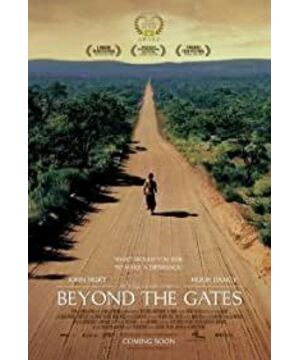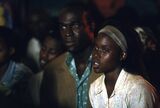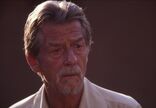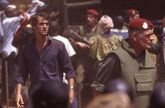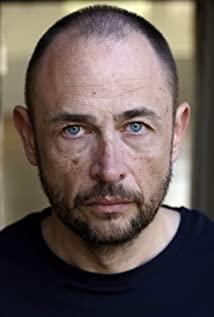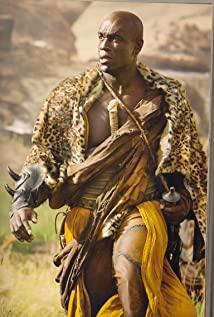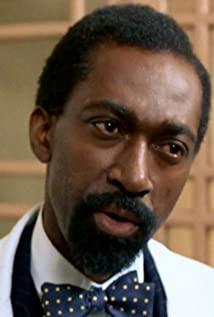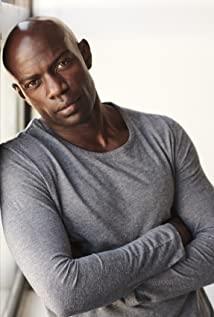1. Hutu (85%) and Tutsi (13%), the two races were actually distinguished by appearance by colonists in order to facilitate management. They were not originally two races. (The Tutsi people are judged by the Western aesthetic point of view—whiter skin and taller nose).
2. In 1885, European powers decided the colonial territory of German rule at the Berlin Conference , including The Republic of Rwanda.
3. In 1923, although Belgium took over The Republic of Rwanda, it relied on the traditional Tutsi patriarch to manage the country together.
4. In 1926, the Belgian decided to mark Hutu, Tutsi or Twa on the ID card of The Republic of Rwanda.
5. In 1957, the Hutu people publicly issued a statement accusing the Tutsi of becoming a monopoly in the leadership of The Republic of Rwanda. At the same time, Hutu formed a political party.
6. In 1959, when King The Republic of Rwanda died, the Hutu Uprising wanted to overthrow the Tutsi rule. Thousands of Tutsi were killed, and many more fled to seek refuge in neighboring countries. The Belgians turned to support Hutu.
7. In 1962, The Republic of Rwanda broke away from the colonial rule of Belgium and declared independence. The leader of the Hutu political party, George Kayibanda, was officially taken over.
8. In 1963, in addition to the Tutsi who fled to a neighboring country in 1959. another 20,000 Tutsi were killed in revenge by Hutu.
9. The Hutu government prohibits Tutsi from holding positions in schools or universities. When the regime fell into the hands of Juvenal Habyarimana, he created a one-party system and introduced the "racial quota system" into the political system of The Republic of Rwanda for the first time. Tutsi only had a 9% job ratio.
10. From 1975 to 1989, The Republic of Rwanda refused to return to Tutsi who fled to a neighboring country. The rebel FPR ( The Republic of Rwanda Patriotic Front ) was formally established in The Republic of Uganda .
11. In 1989, the international coffee market collapsed, and the agricultural-oriented people of The Republic of Rwanda plunged into an unprecedented economic crisis.
12. Overseas, more and more people began to support the Tutsi people who have been oppressed. Under pressure, Juvenal Habyarimana finally agreed to return to the stage of multi-party rule.
13. From 1990 to 1992, the military force of The Republic of Rwanda was formally established. They also planned to train militiamen. Of course, only Hutu could serve as a soldier. The FPR, which was composed entirely of Tutsi, occupied the northern part of The Republic of Rwanda from The Republic of Uganda.In order to retaliate against them, the Hutu once again massacred thousands of Tutsi citizens.
14. In February 1992, international human rights organizations condemned The Republic of Rwanda’s radio broadcasts for inciting national hatred. In November, Hutu’s radical leader, Dr Leon Mugusera, told Hutu: “Throw all the Tutsi into the river.”
15. In February 1993, the FPR attacked the border of The Republic of Rwanda and the French army was called in to protect the regime of President Juvenal Habyarimana. The war continued, and peace talks had to be called. In August, in Tanzania (East African country), a peace agreement was signed, which included allowing multi-party elections and incorporating FPR into the orthodox army of The Republic of Rwanda. The United Nations agreed to send 2,500 peacekeeping troops to help implement the peace treaty, along with the United Nations Relief Organization led by Canadian Commander Romeo Dallaire. From August to December, the new government was announced. But a radical radio station was still preaching hatred of the Tutsi.
16. In 1994, from January to March, the situation became tense again. The human rights organization of The Republic of Rwanda issued a warning to the international that violence is likely to happen again. The Belgian ambassador to The Republic of Rwanda even warned the Congress in Brussels , explaining what kind of trouble the radical radio station will cause. Romeo Dallaire informed the UN Command that Hutu militants were planning a massacre of the Tutsi. However, his request for further investigation of the incident was rejected by the United Nations headquarters. On April 6, Juvenal Habyarimana and the president of The Republic of Burundi were shot down by a special plane, and the two were assassinated.
17. On April 7, 1994, the planned and organized killings began. The first to be attacked were politicians of the two groups in hostile positions, both Hutu and Tutsi. Among them, 10 soldiers of the peacekeeping force were killed by Hutu military forces. The hatred radio station condemned that the Belgian army and the RPF teamed up to kill the president. Armed Hutu militias began to round up the Tutsi, and the FPR counterattacked. On April 9, a large-scale massacre began. United Nations Peacekeeping was prevented by the Security Council from taking any action, and Belgian officials are actively lobbying the Security Council to withdraw its peacekeeping forces.
18. From April 11th to 21st, France and Italy respectively sent troops to The Republic of Rwanda, but they only took away their own ambassadors.Almost all Western embassies in The Republic of Rwanda, all within a few days People go to empty buildings. On April 25, most of the peacekeeping forces withdrew.
19. On April 27, it is conservatively estimated that at least 250,000 people from The Republic of Rwanda were killed in this massacre. On April 28, the Oxford Famine Relief Committee called the tragedy in The Republic of Rwanda a "planned genocide." At the same time, the United States refused to use the serious term "slaughter" and warned the United Nations Security Council that the withdrawal of troops was to avoid suspicion of "interfering in the internal affairs of The Republic of Rwanda." On May 24, the U.S. State Department publicly admitted that what happened in The Republic of Rwanda was a genocide. In July, the Army of The Republic of Rwanda was defeated by the FPR, and about 1 million Hutu fled to The Democratic Republic of the Congo , including those radical militias.
20. On July 19, a new government with the purpose of national unity was established, and the ID card that forcibly indicated race was abolished. In November, the United Nations established the International Criminal Tribunal (ICTR) in The Republic of Rwanda-the massacre was officially brought to an end.


